Classic 1973 Bedford HA Post Office van beautifully preserved
Posted by Chris Graham on 23rd November 2023
Mike Neale tells the story of the Mills Bothers’ latest Post Office van, a 1973 Bedford HA, and its restoration.
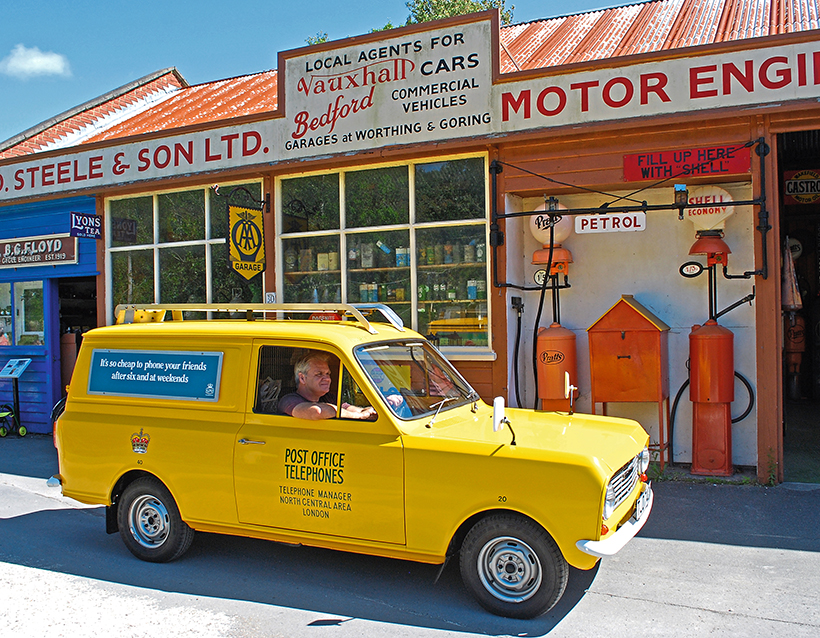
The Mills brothers’ latest project, a 1973 Bedford HA van.
Bedford’s boxy HA van had a very long life, being introduced in 1964, outliving not only the Vauxhall Viva HA saloon that it was derived from, but also the HB and HC Vivas, only going out of production in 1983. 6cwt (HAE) and 8cwt (HAD) versions were offered initially, with the 8cwt replaced by a 10cwt (HAV) in 1973. Later vans were badged as the ‘HA110’ for the lighter duty version (by then 7cwt) and ‘HA130’ for the heavier weight (10cwt).
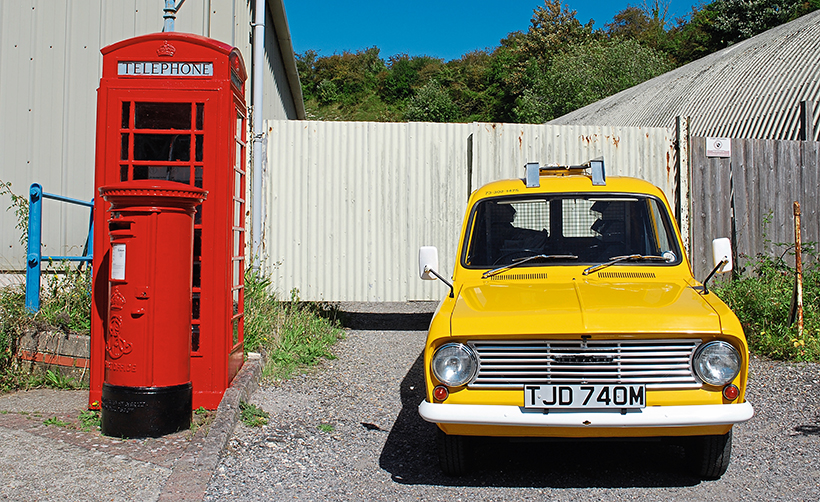
A once common British scene.
To begin with, the vans had the 1,057cc Viva HA engine, though with a lower compression ratio. From 1967, the 1,159cc engine from the HB Viva was fitted. Later vans had a 1,256cc unit. You got a four-speed all-synchromesh gearbox plus rack and pinion steering.
They were sold in large numbers to the Post Office for the Telephones fleet, and continued in use into the British Telecom era, as well as seeing service as Royal Mail and Postal Engineering Vans.

Early GPO HA vans had wing mirrors rather than door mirrors.
It doesn’t seem that long ago that there were yellow ex-Telephones Bedford HA vans everywhere, and battered ones even popped up in films, such as A Fish Called Wanda.
I don’t remember ever seeing one as mint as this, however, even when they were still in service. It is the latest van to be restored by the Mills Brothers, Andrew and Simon, assisted by their friend, mechanic and vehicle bodybuilder Gordon Samuel, and it is of course up to their usual high standards. Their vehicles have featured in these pages in the past; in fact we have another in stock for use early next year.
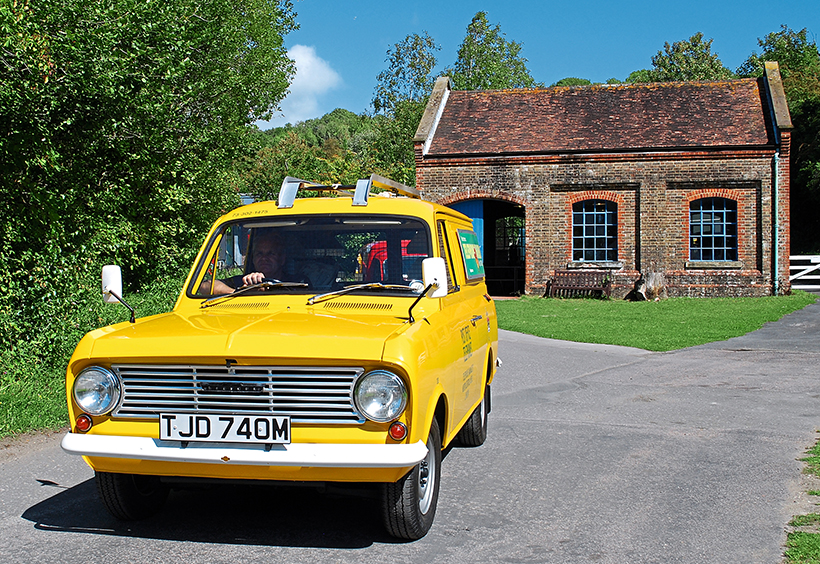
The Bedford at Amberley Museum.
Built in 1973, this HA is quite an early example from the Telephones fleet, which only went over to these after the Minor Vans were discontinued in 1971. Apart, that is, from four Bedford HA vans which had been supplied by Vauxhall to the GPO for trial in 1964/65. One was a 50cu.ft. mailvan, one a 6cwt telephone utility and the other two were used as Radio Investigation vans.
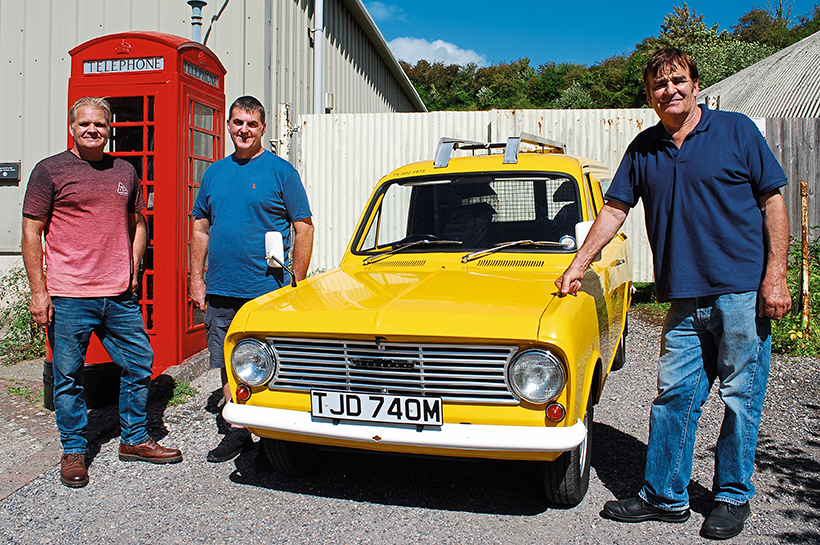
Simon Mills, Gordon Samuel and Andrew Mills can be proud of their work on this Bedford.
The Post Office had traditionally bought Morris vehicles, so perhaps logically they would have gone straight over to the new Marina van with the Minor’s demise, but there was a delay in BL being able to supply these; none were available until December 1972. The Bedford HA was available and cheaper, and the Treasury was looking for savings in the whole-life costs.
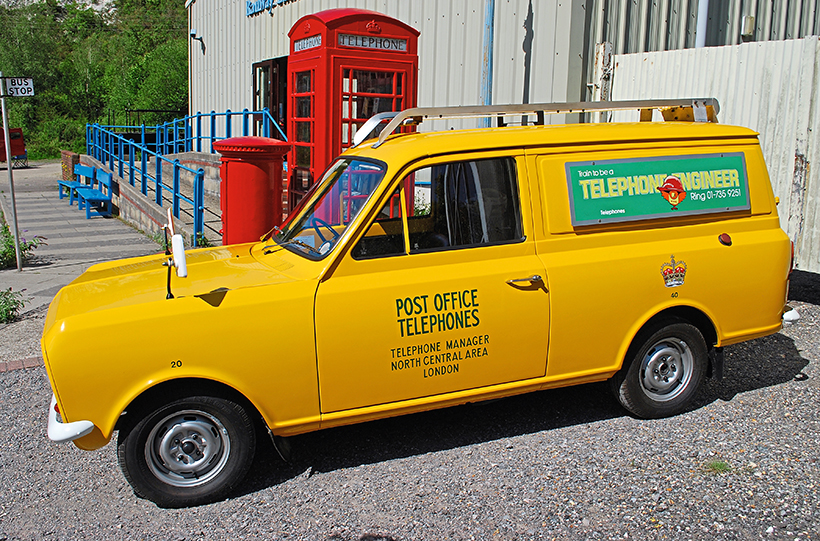
The van saw service in North London.
Following a tender process, an initial order was thus placed for 2,120 HA vans, delivered between March and December 1972 as golden yellow telephone utilities, although 13 were repainted in red with a white stripe for use by postal engineering. A further order of 3,200 HAs was placed in 1973, delivered in 1973-74, including this one. Some HA vans were also leased from 1976. The last Post Office Telecommunications HA vans were ordered in 1980, which had become British Telecom by the time most were delivered, with over 33,000 supplied in total.
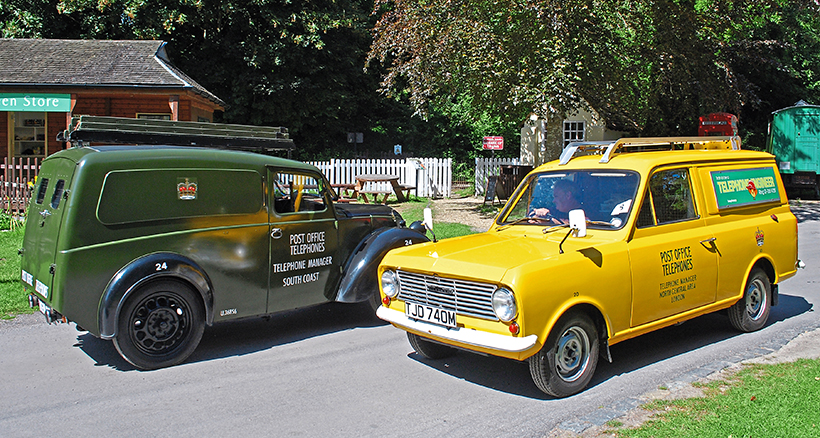
The Bedford passing one of its predecessors, a Morris Z Telephone Utility.
Postal Bedford HA Vans were purchased between 1975 and 1978, after which they went over to Marina and then Ital vans.
There were complaints about the HA van’s lack of power from the Post Office Engineering Union, with their vans apparently detuned by the fitment of low-lift camshafts restricting power to 21½hp, presumably in an attempt to save fuel, despite camshafts offering 36 or 44hp being available. Some modifications were made after testbed experiments were undertaken.

Rear view of the Bedford with other ex-post office vans at Amberley Museum.
This particular van was in service in London and decommissioned in 1980, with its last MoT running out in 1982, so it wasn’t used for long after it was sold off. It was then stored in a greenhouse in London for about 15-16 years before being sold on again.
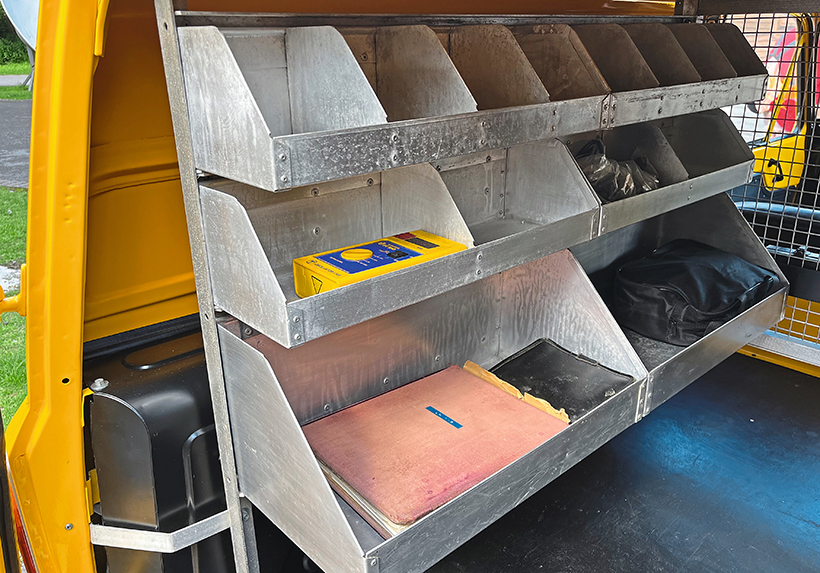
The Mills Brothers first saw it for sale on eBay about eight years ago and Andrew called the owner. However, someone else had already arranged to come from some distance away to view it and did then buy the van. He got it running, but then put it up for sale again, and the Mills bought it off him. They began the restoration in 2019, completing it just two weeks before the photoshoot, taking about 3½ years, on and off, and this was its first public outing after being off the road for 41 years. It has only done 55,000 miles from new.

The van was very complete and, remarkably, had almost no rust on it. “Normally the bottoms of the back doors fall off, but these were excellent. It was like new underneath. Gordon just had to do a few small rust repairs around the wheelarches,” notes Andrew. “The whole van was covered in dents, though. That was the worst part about the restoration, straightening then filling and sanding dents everywhere. We wanted to keep as much of it original as possible, however.” The only panel they replaced was the nearside front wing, as that was too badly dented to straighten out – it had pushed out the wheelarch and it was impossible to get it back into shape.
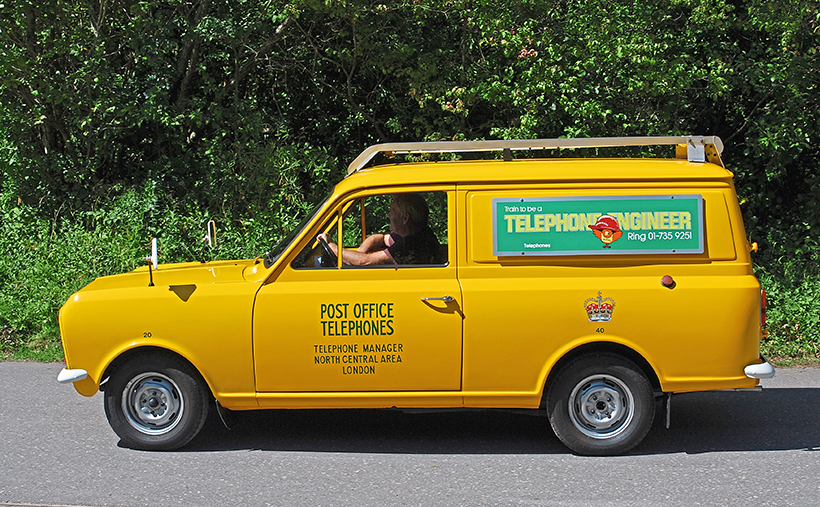
Clip-on adverts only lasted until 1974, when self-adhesive ones started being used.
The van had been badly hand-painted, but you could still see the Post Office Telecommunications lettering on the side that it had when it went out of service. It has now been returned to its original Post Office Telephones livery. Simon did much of the bodywork preparation and Andrew repainted it.
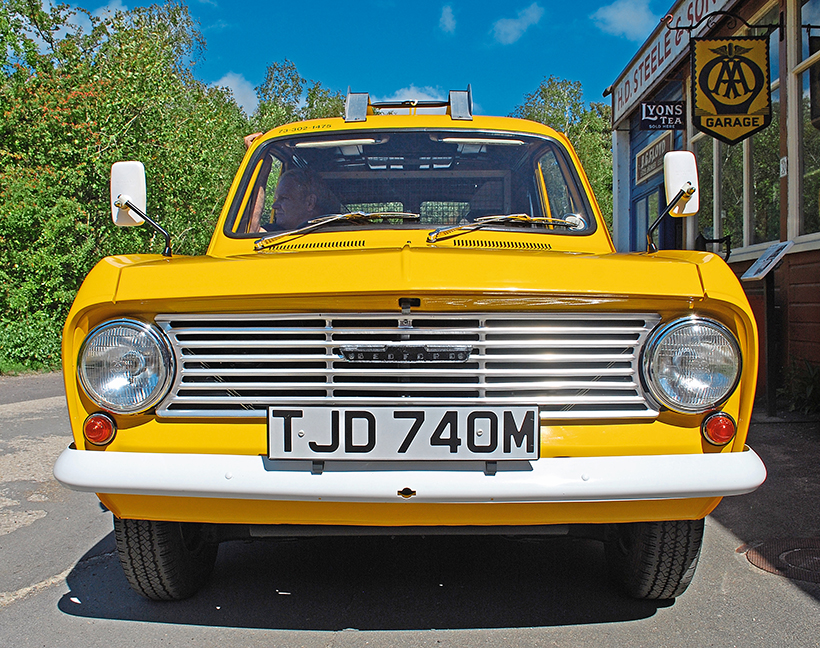
Polished grilles on early HA vans changed to matt black from 1977.
Being a 1973 van, this has several differences compared to the later Telecommunications/BT Bedford HA vans. The most obvious is perhaps the bright polished radiator grille, with later ones being black, as were the later windscreen wiper arms. It has the mirrors mounted on the wings, rather than on the doors on later vans. The mirror stalks were already on the van, but no mirrors – fortunately the Mills brothers had a couple of spare ones. M- and N-reg vans had the clips on the side for mounting the advert boards on the side – later ones dispensed with these in favour of stick-on adverts. Andrew plans to change the current offside advert for one with Busby on for the full period effect. He has had the various interior and under-bonnet stickers remade.

Rear view shows the internal racking and mesh screen behind the driver.
“The earlier vans had slightly wider wheel dishes for some reason. We had these shot-blasted and painted. Of course no hubcaps were originally fitted as a cost saving measure, and the wheel nuts were double sided to Post Office specification so that they couldn’t be put on the wrong way round,” explains Andrew. “There were no HA 110 badges on the front wings in 1973 – these only appeared on later vans. The headlamps pre-date the fitting of sealed beam units. It has the older style steering wheel, seats, door panels and interior door pulls.”
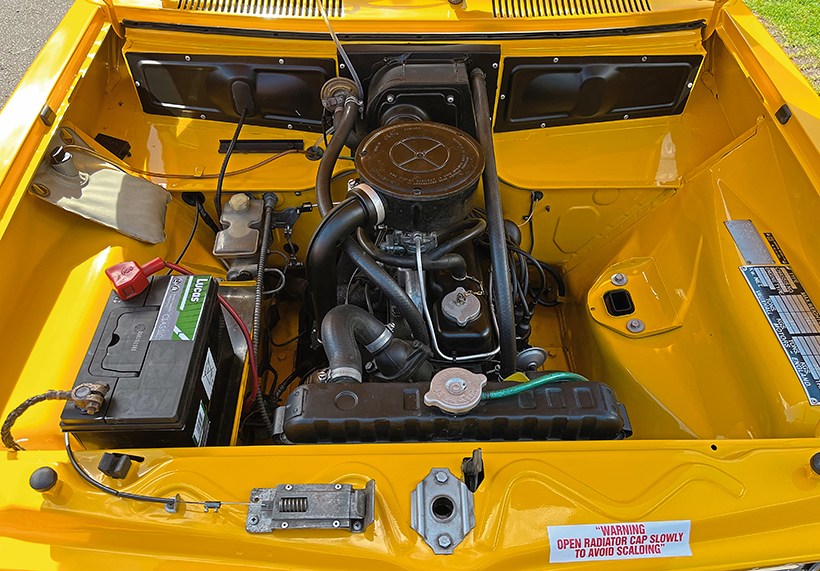
Engine is the original 1,256cc unit.
Andrew managed to get hold of some genuine BT floor mats, which were missing from the van. He also fitted a front parcel shelf to make it more practical, as these were not provided in Post Office vans due to cost. He remade the interior mesh grille that divides the driver from the rear of the van. “The aluminium storage bin units in the back came out of a scrap BT Morris Ital van that we had bought, which lined up perfectly with the existing holes in the floor in the back of the Bedford, so they must have continued with the same standard design,” recalls Andrew. “The ladder rack was on the van and was refurbished. We’re on the lookout for a new ladder for it though, as there wasn’t one when we bought it.”
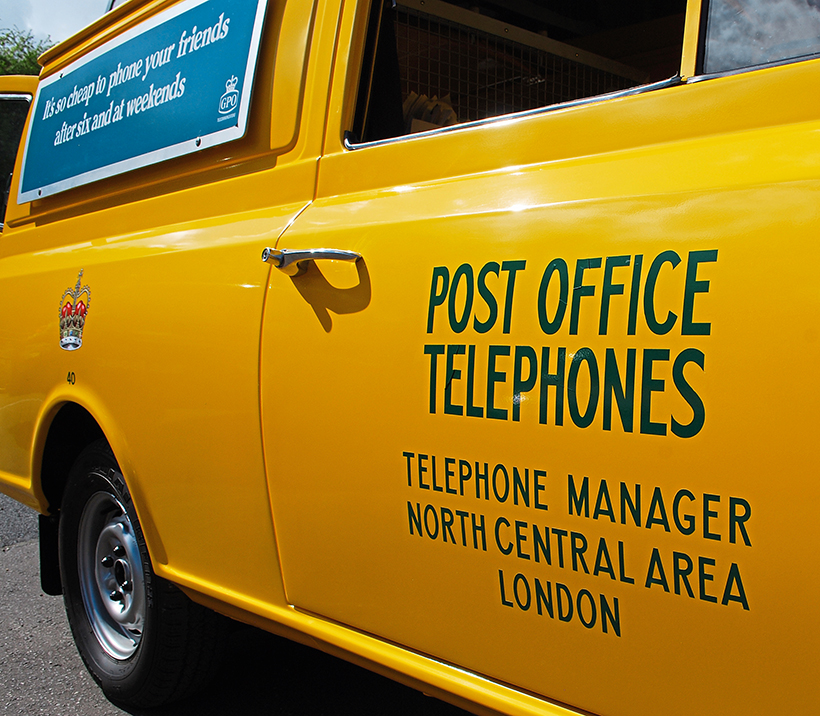
The van was allocated to North Central Area of London.
The engine is the 1,256cc original, and just needed a service. A new-old-stock distributor was fitted, as well as a new carburettor as the linkage was missing from the one on the van. “The gearbox and axles are original and are as quiet as a mouse – the back axles often aren’t!” jokes Andrew. “It drives nicely at around 45mph.”
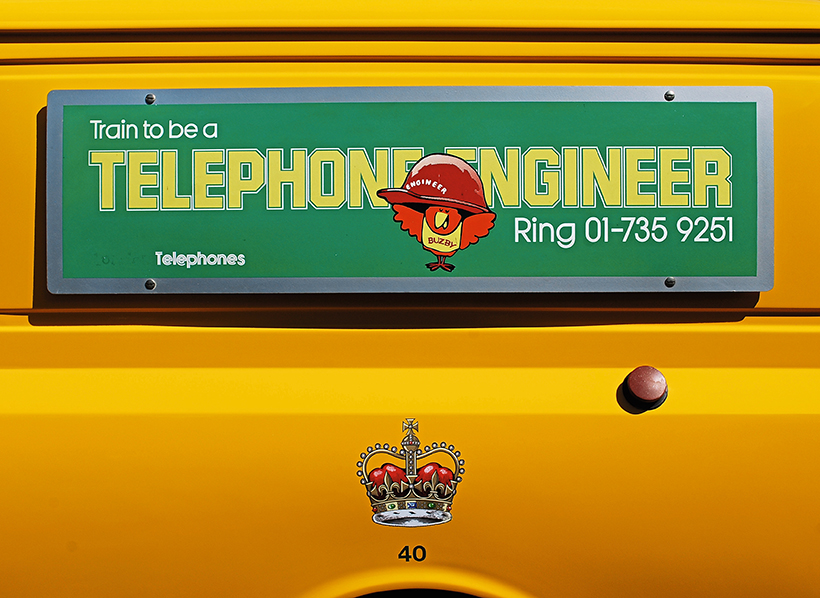
Busby encouraging people to become a telephone engineer.
Andrew understands that this particular van wasn’t used for normal Telephone duties, but so far hasn’t been able to find out what it was used for.
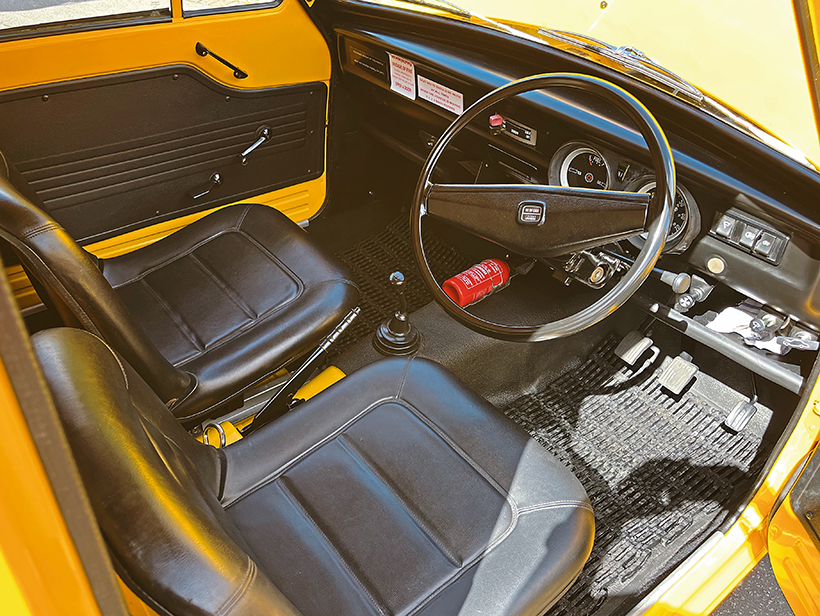
Cab; note the short, stubby gear lever and bracket-mounted choke knob which tended to come loose or break in service.
The Post Office Vehicle Club advised on the correct original livery. It confirmed that the serial number on the roof should be Arial font with hyphens between the code numbers on 1972-74 Telephone Utilities, as also verified by period Post Office record photos. ’73’ is the year, and ‘302’ denotes an HA van. This code number was used by the Post Office to identify the vehicle when ordering any parts for the van, rather than the registration number. From 1975, with the advent of the new corporate red double-line livery, the serial numbers were unhyphenated red figures in Helvetica. Relatively few 1972-74 HA vans were repainted into the later livery, so most of those retained their hyphenated serial numbers until disposal.

Number plates were mounted above the front bumper, except on the 1964/65 trial HAs.
So, what do Andrew and Simon plan to do next? “Have a bit of a break for now!” Andrew jokes. “I said to you at last year’s Amberley Communications & Commercials Day that we’d get this van finished for this year’s event, and we did, but we were flat out at the end. Next in line is an A-reg, ex-BT Morris Ital van that has only done 37,000 miles.” I refrained from asking him to get that one finished for the 2024 show, however.
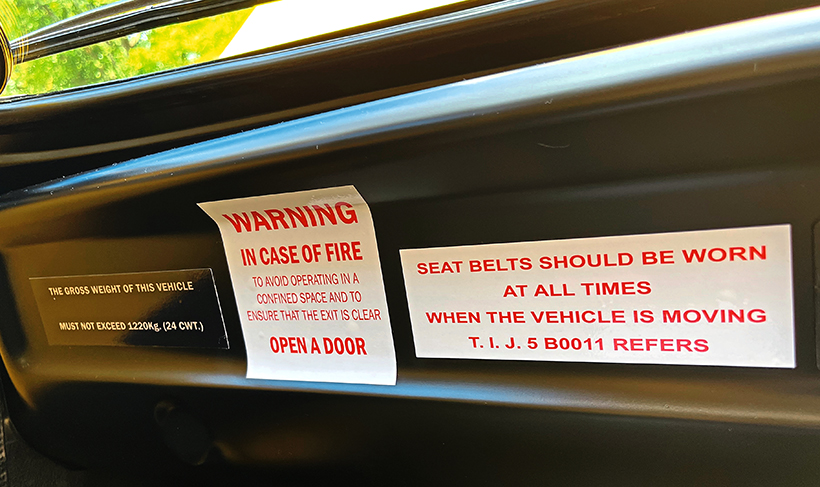
Replicas of the original dashboard stickers have been fitted.
With thanks to Andrew Mills, Simon Mills, Gordon Samuel, Amberley Museum in West Sussex (amberleymuseum.co.uk) and to the Post Office Vehicle Club (povehclub.org.uk) for their assistance with this article.
This features comes from the latest issue of Classic & Vintage Commercials, and you can get a money-saving subscription to this magazine simply by clicking HERE

Previous Post
The life and times of the unique HMS Swiftsure
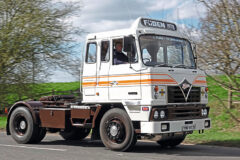
Next Post
Original 1977 Foden Fleetmaster press vehicle restored



